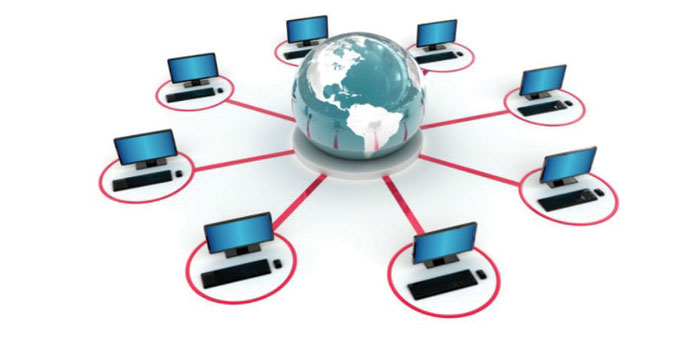By Till Simon Nagel/DPA/Berlin
Almost anyone in the world can put their personal computer into the service of science, perhaps using it to analyse radio telescope data in the search for extraterrestrial intelligence.
The idea is called distributed computing (DC), in which multiple, autonomous computers are networked to achieve a common goal, and the great thing is: the donor does not need to understand the science.
Most people only use their personal computer (PC) for prosaic activities like sending e-mails, surfing the Internet or playing computer games, so there’s plenty of reason to offer spare capacity to scientists who might need it to study medically relevant human proteins or look for gravitational waves from spinning neutron stars.
As explained by Andreas Stiller, who writes for the German computer technology magazine c’t, great amounts of research data are divided into a large number of packets small enough to be crunched in a reasonably short time by the project volunteers’ PCs.
Instead of using a large, expensive supercomputer, DC projects harness the combined computing power of innumerable personal computing devices via, for instance, the open-source software platform BOINC (Berkeley Open Infrastructure for Network Computing), originally developed at the University of California, Berkeley, to support the volunteer computing project SETI@home.
SETI stands for the “Search for Extra-Terrestrial Intelligence”.
Another major DC space project is Einstein@Home, which was launched by Germany’s Max Planck Institute of Gravitational Physics (AEI) in 2005.
“We’re mainly interested in searching for a certain kind of gravitational wave,” said Heinz-Bernd Eggenstein, a software engineer in AEI’s Department of Observational Relativity and Cosmology.
Project volunteers’ PCs search data for weak astrophysical signals from spinning neutron stars, often called pulsars, in an attempt to directly detect gravitational-wave emissions for the first time.
Predicted to exist by German physicist Albert Einstein in 1916 as a consequence of his general theory of relativity, gravitational waves can be defined as propagating waves of gravitational energy produced by accelerating masses - ripples in space-time, as it were.
Detecting them would usher in a new era in astronomy.
Some 50,000 people have volunteered the use of their PCs to analyse data packets in the hunt for the elusive ripples. Some are academics, some physicists and many are simply interested in astronomy and therefore donating their computing capacity to research, Eggenstein said.
A credit system allows volunteers, or teams of them, to monitor their contribution to the project. Lists of the top volunteers are maintained on the Einstein@Home website.
“It’s become a sporting competition for some of them,” Eggenstein said.
And some are spurred to keep upgrading their PC, knowing that the more data it can analyse, the greater the chance of detecting gravitational waves.
Volunteers whose PCs discover a new pulsar, which has happened about 50 times already, receive framed certificates of appreciation. If the results of a data packet analysis by a volunteer’s PC are incorporated in the research, the person receives mention.
Any computing device can be used to analyse data, from Android smartphones to tablets and gaming computers.
“The smartphone is a ‘gateway drug’, but every little bit helps,” Eggenstein remarked. “You don’t need a supercomputer.”
Older-model computers, not surprisingly, are slower in analysing data. A dpa computer that was put to the test - a five-year-old notebook - took about 15 hours for a data packet.
Volunteers can decide for themselves how their PC is used: whether it analyses data only when otherwise idle, whether the BOINC client software runs constantly, and how much central-processing-unit power is consumed.
The only cost, Stiller noted, is for “the not inconsiderable energy consumption, since the computer doesn’t switch to standby mode but continues to run.” The device needn’t be permanently online to analyse data.
While Einstein@Home deals with a theoretical phenomenon, many other BOINC projects are down-to-earth.
They include the Quake-Catcher Network, which uses sensors attached to computers and smartphones to detect seismic waves; Rosetta@home, which studies the shape of human proteins that may lead to cures for major diseases; and the Lattice Project, which is researching evolutionary relationships using DNA and protein sequence data.
Another interesting project is Enigma@Home, which is trying to decipher three enciphered messages generated by the Nazis’ famed electro-mechanical Enigma machine. They were intercepted in the North Atlantic in 1942 and are believed to be unbroken.



